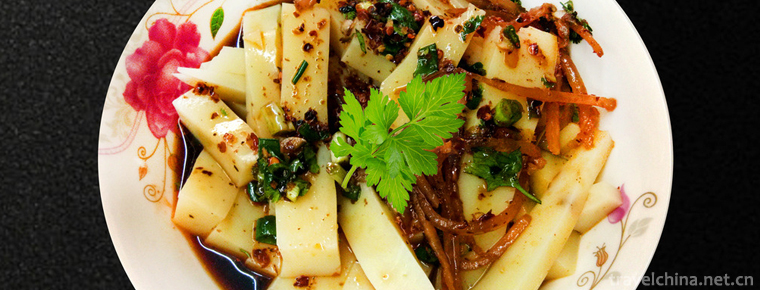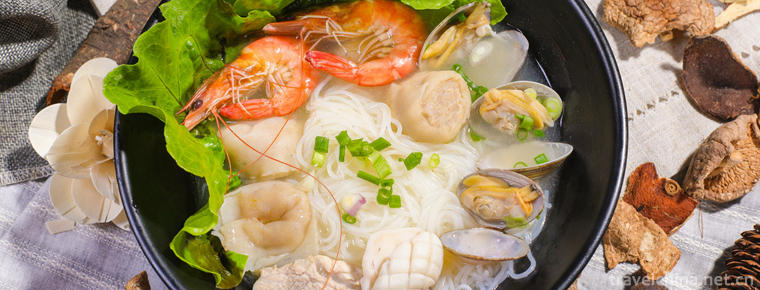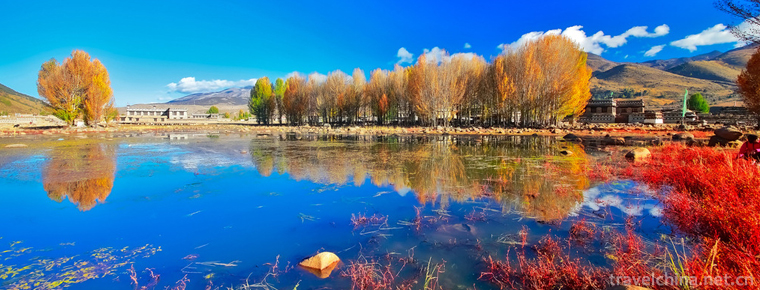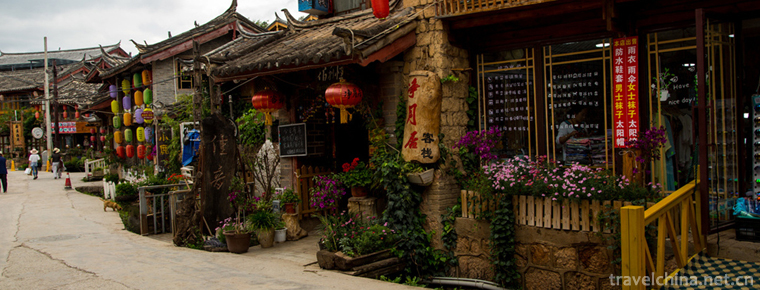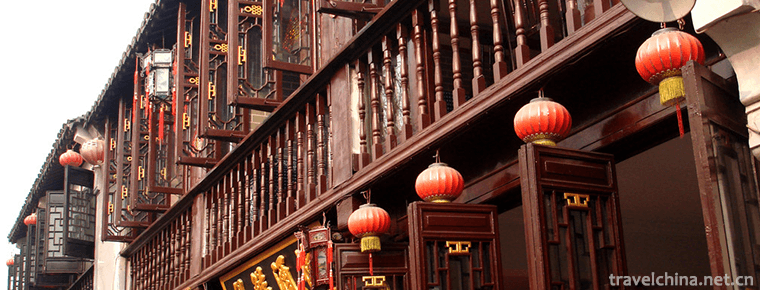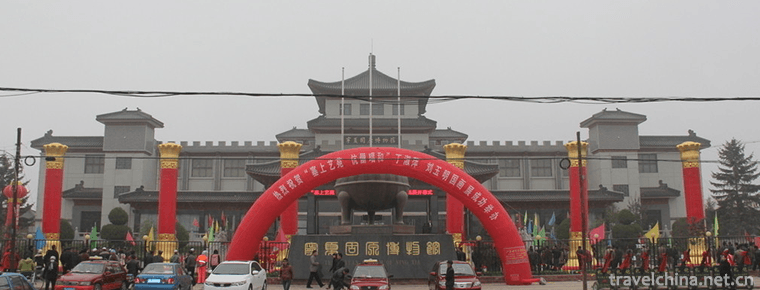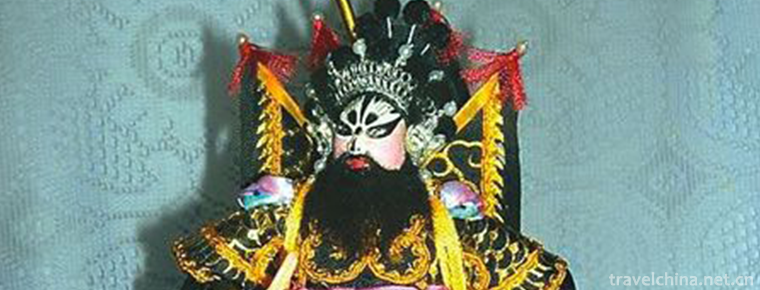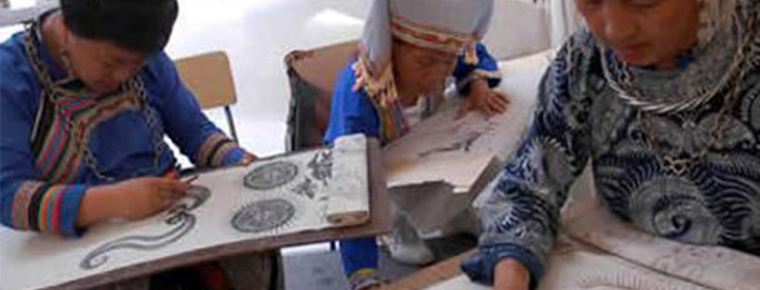Ten times of music
Ten times of music
Shifan music is a traditional instrumental music spread by Hakkas in Fuzhou and Western Fujian Province. It has been circulated since the middle of Daoguang in the Qing Dynasty. The origin of Shifan music can be broadly divided into tunes, minor tunes, cards and some popular songs. Up to now, 21 tunes have been circulated, such as Wufeng Yin and Qinlou Yue. There are 13 kinds of musical instruments in Shifan music, such as string instrument Coconut Hu, percussion instrument cymbals, gongs, wolf tents, etc. Playing emphasizes the second half of the beat, high octave music, rough style. Because the music is imparted orally and heartfelt, there is no written information, and most of the local people go out to do business, ten times of music will face the dilemma of loss of transmission.
In 2006, it was selected as the first national intangible cultural heritage list.
historical origin
Also known as "Shihuan" and "Shifan", they are the main local music in Fuzhou. In the early Qianlong period of Qing Dynasty, Hou Guan Zheng Luoying wrote "Bamboo Branch Ci of Rongcheng Yuanxi": "The night is crowded in Minshan Temple, and the moon is the gate outside Minshan Temple; the smoke bag of betel nut teeth is ten times larger in the disciples'field. "There are 13 kinds of musical instruments such as flute, pipe, Sheng, coconut beard, gongs, cymbals, Yungong, Langzhang, wooden fish, sandalwood board and Qinggu.
Ten times of music developed from percussion music of dragon lantern dance. Most of its music cards were based on the relationship between natural society, reflecting certain artistic conception, and some of them also showed ancient legends and stories. At first, only several Gong and drum music cards such as percussion "Futao", "dripping water", "Ganpai" were used. After that, "Futao" developed into four sets of "Fu, Lu, Shou and Xie", "Ganpai" developed into "Wen". Gan and Wu Gan are two sets. Ten times of music, also known as "ten classes" and "five pairs", is named for playing ten instruments made of silk, bamboo, leather, wood and gold. Hakka Ten-fold Music is a folk instrumental music inherited by Hakka folk artists in past dynasties. Its Title mostly depicts the nature and Hakka people's life customs, such as "Bishui Yard", "Lake Willow", "Good Flowers and Moons", "Mei Lan Ju Zhu", "Ying Ge Yan Dance" and so on.
Ten Traces to the Origin
Since there are many versions of Shifan music in the real historical records, it is still impossible to verify which era it originated from. According to legend, in 1779, in the forty-fourth year of Qianlong reign of the Qing Dynasty, there was a Ten-fold Competition in the Southern Campus of Fuzhou City. It played all kinds of music cards, such as Fu, Lu, Shou, Xi, and spread in Bamin Shiyi. During this period, it has been a very mature folk music, its instruments are flute, pipe, Sheng, coconut beard, gongs, cymbals, Yungong, Langzhang, wooden fish, sandalwood, Qinggu and other 13 kinds, and then added silk and bamboo pipe music. "Shifan" originated in Fuzhou Tea Pavilion. During the Ming Dynasty, there was a musician surnamed Wang who was engaged in musical instrument production. The shop was called "Tianhua Zhai". At that time, music enthusiasts often gathered in front of and behind the shop to discuss their skills and promote the development of "Shifan" music. At that time, the grand occasion was still mentioned with interest by many old people. There were ancestral temple theatre and open-air south school yard near the tea pavilion, which made it easy for various classes to compete with each other, and the number of participants reached thousands. Every time the music club shows, on the stage, all the classes are singing with drums, fighting between dragons and tigers, and there is a great deal of enthusiasm among the people of the city. When you think about the lively scene, the melodious, lively and fluent melody seems to be still in the room and never drifted away.
According to Zheng Luoying in Qianlong period of Qing Dynasty, the poems of Shame, Xuzhai and Zhuzhi Ci of Rongcheng, it is stated that "Minshan temple is full of flowers at night, and the moon is the gate outside Minshan temple." Betelnut teeth cigarette bags, more than ten times in the children's court. "It can be seen that ten times of music was popular among the people in Fuzhou at that time. Long ago, dragon lanterns were popular among Fuzhou people. Later, percussion accompanied by dragon dance gradually separated and became an independent art form. It used five instruments: wolf sticks, gongs and cymbals. In order to avoid the monotony of the five instruments combination, people add the orchestral instrument flute, comic tube, coconut Hu and so on, as well as the clear drum and Yungong. In order to achieve a balance in volume, each orchestral instrument is equipped with a double number, forming a double flute, double pipe, double beard, a total of about ten kinds, the orchestra is basically formed.
The birthplace of Fuzhou Shifan Music is Tea Pavilion. It is located in the north of Taijiang District. It is a famous handicraft street in Fuzhou City. According to Zheng Luoying's poems of Qianlong in the Qing Dynasty, the poems of "Nianxuzhai Poetry Copy" described ten times in the poems of "Bamboo Branches at Evening in Rongcheng City", it was recorded that: "In the Minshan Temple, there are many times at night, outside the Minshan Temple, when the moon is at the gate, betel nut teeth produce cigarette bags, and there are ten times more in the disciples'hall. "These poems are enough to reflect the lively and joyful occasion of ten times of music in Fuzhou. It also records that Fuzhou Shifan Music was very popular in Fuzhou City during the reign of Qianlong in Qing Dynasty. Obviously, it first became popular in cities, and gradually to the surrounding countryside and Fuzhou's five districts and eight counties. It also spread to Ningde, Jianyang, Nanping, Gutian, Fuan, Zherong and Xiapu.
The Development of the Times
"Ten times of Hakka music in Western Fujian" has been spreading for a long time. During this period, it constantly assimilates and blends the local She Yao ancient music, Han opera, Chu opera, Chao opera, tea picking opera, puppet opera music and even religious music to enrich itself and form a very deep artistic accumulation and rich and colorful artistic style. It is said that the total number of tunes has reached more than 1000, but many of them are now lost. Up to now, fewer than 300 copies of the ancient "Gongchi Spectrum" still can be found and handed down from the collections, records and mimeographs collected in the 1950s and 1960s of the last century, while fewer than 100 copies are still played among the people.
The spread rate of Fuzhou Shifan music is amazing. It gradually occupied the vast rural market in the way of "encircling the countryside by the city". By the end of the Qing Dynasty and the beginning of the Republic of China, it had spread not only to Fuzhou districts and counties, but also to Ningde, Jianyang and Nanping counties. In the 1920s and 1930s, Fuzhou Shifan Music experienced a peak period of development. At that time, Shifan Class Club not only went to Beijing, Shanghai, Hong Kong, Taiwan, but also went to Singapore, Southeast Asia and other places to perform and teach art. Until half a century after Chen Yingmu, a group of ten artists, appeared on the stage, sparks still collided repeatedly. As for the provincial, municipal and district-level literary and art evenings, folk performances and even award-winning, reception of national and overseas music experts, Chen Yingmu can easily cite a large number. Experts from all parts of China, Britain, France, Japan and other countries have almost reached a consensus on the ten-fold music full of local flavor: the ten-fold music has the local characteristics of Fuzhou.
"Hakka Ten-fold Music in Western Fujian" is widely spread in the urban and rural areas of Western Fujian and is deeply loved by the masses. In towns and villages, there are almost ten music clubs, mostly amateur entertainment groups. Class clubs in some areas are also well-known, such as the Shanghang Folk Music Group in Shanghang and the Old Soviet National Orchestra in Yongding. And a large number of famous folk artists such as Huanghuazi in Liancheng and Wen Fulin in Shanghang emerged. In the early 1950s, Shanghang County Folk Music Group performed ten famous pieces of music, Alpine Running Water, which was selected by the provincial government to perform in Beijing and was highly praised and awarded.
Inheritance Significance
There are no strict regulations on the number of musicians or the instruments used by the Hakka Shifan band in Western Fujian. A Shifan band usually has five to seven members at a minimum and more than ten to dozens at a time. The basic musical instruments of Hakka Shifan music are flute, reed, pipa, three strings, erhu, small fat pot, big fat pot, splint and so on. The flute is the leading instrument. The performances of Hakka Ten-fold Music are composed of sitting and playing, with the master as the conductor. The flute leads the way (leading), and the venue and the martial arts interval. The Hakka Shifan music in Western Fujian is in a situation of lack of successors, which urgently needs rescue and protection.
The value of carrying forward and inheriting ten times of music of Fuzhou Tea Pavilion has gone far beyond the scope of musicology. It is an inestimable wealth of exploration and preservation for many disciplines such as ethnology, folklore, cultural comparison, cultural communication, ethnic demography and history of the Chinese nation.
Liu Chunshu, an expert in folk music research at Fujian Museum of Art, said that it is inevitable that Shifan should be rescued. Its rhythm and performance mode are consistent with the productivity of its prosperous era, and in harmony with the slow pace of people's life at that time. In the fast-paced modern life, ten times from prosperity to decline. Of course, this kind of ancient music has its cultural value and needs to be protected. The support of government policy is the strong backing for the protection of ten times of music. Fuzhou Shifan Music has local characteristics.
The state attaches great importance to the protection of intangible cultural heritage. On May 20, 2006, Ten-fold Music was approved by the State Council and listed in the first batch of national intangible cultural heritage list.
In 2006, Longyan City of Fujian Province participated in the declaration of "Shifan Music (Hakka Shifan Music in Western Fujian)".
"Ten-fold Music (Tea Pavilion Ten-fold Music)" declared by Fuzhou City, Fujian Province
Selected the first batch of national intangible cultural heritage list, selected project name "Shifan Music", traditional music project category, serial number 75.
In 2008, Huai'an City of Jiangsu Province declared "Ten Pan Music (Ten Pan gongs and drums in Chuzhou)".
"Shifan Music (Shao Bo Rong Drum Brand)" declared by Jiangdu City, Jiangsu Province
"Ten-fold Music (Tower Fine Ten-fold)" declared by Hangzhou City, Zhejiang Province
Ten-fold Music (Ten-fold Kunqu Opera) declared by Suichang County, Zhejiang Province
Ten-fold Music (Huangshi Huiyang Ten-tone) declared by Putian City, Fujian Province
Ten-fold Music (Ten-fold Music of Foshan) declared by Foshan City, Guangdong Province
"Ten-fold Music (Hainan Eight-note Instrument)" declared by Haikou City, Hainan Province
Selected the first batch of national intangible cultural heritage directory expansion project directory, selected project name "Shifan Music", traditional music project category, serial number 75.
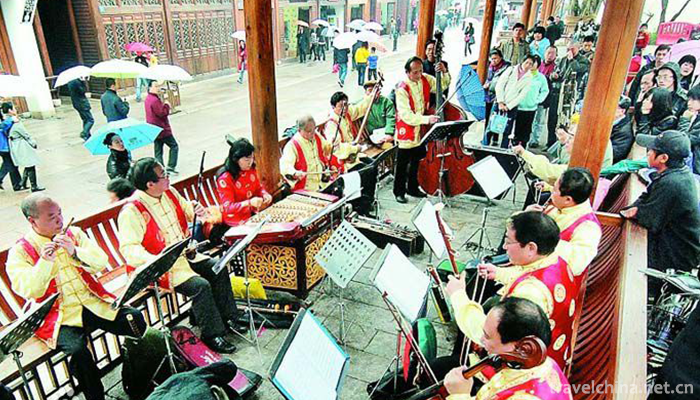
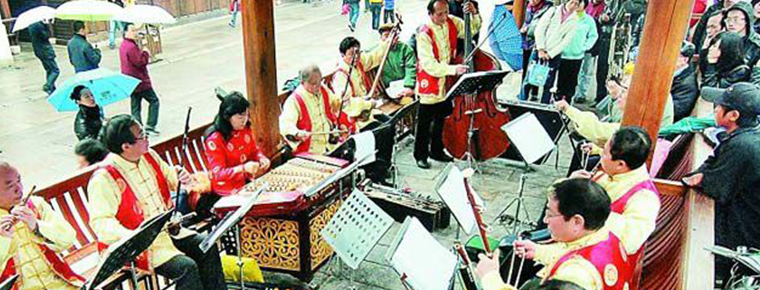
Ten times of music
-
Sad cold Bean jelly
Sad cold Bean jelly Heartbroken jelly is a famous snack in Zhou Li Town.
Views: 193 Time 2018-10-12 -
Daocheng Yading County Ganzi Sichuan China
Aden Scenic Spot is located in Riwa Township, Daocheng County
Views: 591 Time 2018-10-12 -
Zhouzhuang Town
Zhouzhuang Ancient Town is a preferred site for world cultural heritage and the first batch of national 5A tourist attractions. It is located in the southeast of Suzhou City and at the junction of Kun
Views: 357 Time 2018-12-06 -
Guyuan Museum
Guyuan Museum of Ningxia was established on December 30, 1983. It belongs to the Cultural Office of Ningxia Autonomous Region. It is located at No. 133 Xicheng Road, Guyuan City, southern mountain are
Views: 212 Time 2019-01-12 -
Jiangshan Peninsula Tourist Resort
Jiangshan Peninsula Tourist Resort is a provincial tourism resort development zone approved by the People's Government of Guangxi Zhuang Autonomous Region in 1994.
Views: 183 Time 2019-01-21 -
Gudou Hotspring Resort
Xinhui Gudou Hot Spring Resort is located in Gudou Scenic Area, 55 kilometers away from the Capital City, 5 kilometers away from the entrance and exit of Xinhui Cliff South Section of the West Coastal
Views: 230 Time 2019-02-25 -
Color tie
Color tie Coloured tie is also called paper tie and silk tie. It is a kind of simulation art of Chinese traditional folk crafts, and also a comprehensive handicraft.
Views: 347 Time 2019-04-04 -
Legend of Zen ancestors
Huangmei is the birthplace of Chinese Zen culture. There are six ancestral courts of Zen in China, two of which are exclusive in this county. The four ancestors temple and the five ancestors temple in
Views: 158 Time 2019-04-15 -
Batik art
Miao batik technology, the traditional handicraft of Danzhai County, Guizhou Province, is one of the national intangible cultural heritage.
Views: 129 Time 2019-05-10 -
Gufo weir
Located in Huanglongxi section of Jinjiang River in Chengdu, Gufo weir was built in the 25th year of Qianlong reign. Zhangfengzhu, the magistrate of Pengshan County, built a weir to irrigate Huayang, Renshou and Pengshan Sanyi fields.
Views: 176 Time 2020-11-05
